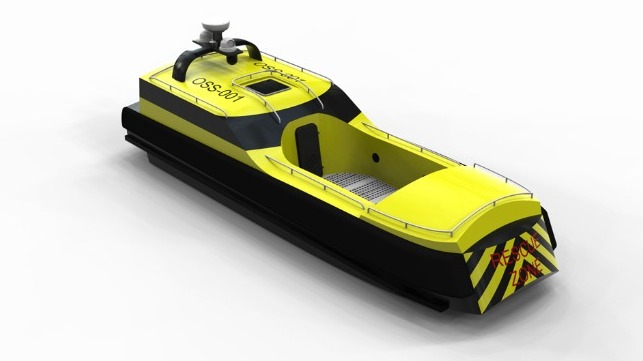Remotely Operated Rescue Vessel for Offshore Wind and Energy Sectors

As the offshore sector expands into increasingly challenging environments, a Scottish start-up is developing a complete lifesaving system that can be used in the offshore energy sector, including wind farms. The prototype design developed by Zelim in partnership with naval architect Chartwell Marine is a first-in-class remotely operated rescue vessel that the companies believe can greatly expand the rescue capabilities for these offshore locations.
“As offshore wind continues to scale up to meet the growing global demand for clean energy, ensuring the safety of seafarers and technicians is critical,” said Sam Mayall, founder of Zelim. “That’s why we are working with Chartwell Marine and other industry partners to develop a cohesive offshore survival system, beyond the vessel itself, engaging with operators and regulators to make sure it is fit to save lives in some of the most challenging conditions imaginable.”
Offshore energy sites present a hazardous environment for personnel and vessel crews, where there is always a risk of man overboard (MOB) incidents says Zelim. However, they believe that the traditional approaches to search and recovery are unsuitable for many offshore facilities.
The increasing distance of projects from shore renders traditional maritime support ineffective. Many offshore wind farms will lie out of the normal operating zones of rescue vessels, rendering rescue procedures even more challenging. Lifeboats can take several hours to reach the site of the emergency, and even rescue helicopters can take well over an hour says Zelim.
The Survivor Class vessel design developed by Zelim and Chartwell is an unmanned rescue vessel designed for rapid recovery in a MOB situation. As an unmanned, remotely operated vessel, crucial deployment time is reduced, while also limiting the risk for rescue personnel.
The vessel will be mounted onto offshore structures and deployed into the water via an approximately 80 foot fall similar to emergency crafts mounted on ocean-going commercial ships. Two waterjets mounted on the craft will activate before contact with the water to stop the vessel from drifting backwards into the offshore structure and to maximize safety in severe weather conditions, Chartwell Marine produced a hull design for the vessel able to operate in significant wave heights of up to nearly 15 feet.
The vessel was designed casualty first says Zelim, meaning that it includes accessible features to address limited mobility challenges, such as a rescue conveyor for recovering MOBs from the water, easy-open door handles, an air-conditioned cabin, and a helicopter pick up zone.
Extensive model testing was conducted by independent naval architect Seaspeed Marine Consulting to validate the design concepts.
